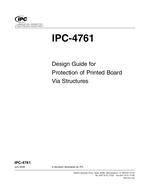UL 263 PDF
$379.00
Fire Tests of Building Construction and Materials
| Published by | Publication Date | Number of Pages |
| UL | 06/21/2011 | 40 |
Description
UL 263 – Fire Tests of Building Construction and Materials
Please note: All interim revisions for this edition available at time of your purchase will be included.
Fire Tests of Building Construction and Materials
UL 263
1 Scope
1.1 These fire tests are applicable to assemblies of masonry units and to composite assemblies of structural materials for buildings, including bearing and other walls and partitions, columns, girders, beams, slabs, and composite slab and beam assemblies for floors and roofs. They are also applicable to other assemblies and structural units that constitute permanent integral parts of a finished building.
1.2 The classifications for building construction and materials are intended to register performance during the period of fire exposure and are not intended to be interpreted as having determined their acceptability for use after fire exposure.
1.3 These requirements are intended to evaluate the length of time that the types of assemblies specified in 1.1 will contain a fire or retain their structural integrity, or both, dependent upon the type of assembly involved, during a predetermined test exposure. The test evaluates the assembly’s resistance to heat, and in some instances to a hose stream, while carrying an applied load, if the assembly is load bearing.
1.4 Under these requirements a specimen is subjected to a standard fire exposure controlled to achieve specified temperatures throughout a specified time period. In some instances, the fire exposure may be followed by the application of a specified standard fire hose stream. This exposure by itself may not be representative of all fire conditions; conditions may vary with changes in the amount, nature, and distribution of fire loading, ventilation, compartment size and configuration, and heat sink characteristics of the compartment. These requirements provide a relative measure of fire performance of comparable assemblies under these specified fire exposure conditions. Any variation from the construction or conditions that are tested such as size, method of assembly, and materials, may substantially change the performance characteristics of the assembly.
1.5 These requirements cover the following measurements and determinations during the test exposure:
a) Measurement of the transmission through the assembly of heat, and of gases sufficiently hot to ignite cotton waste in walls, partitions, floors, and roofs.
b) Measurement of the load carrying ability of load bearing elements in wall, partition, floor, and roof assemblies.
c) Measurement of the load carrying ability of individual load bearing assemblies, such as beams and columns, with consideration for the end support conditions, either restrained or not restrained.
1.6 These requirements do not cover:
a) Accumulation of data as to performance of assemblies constructed with components or lengths other than those tested.
b) Evaluation of the contribution of the assembly to generation of smoke, toxic gases, or other products of combustion.
c) Measurement of the degree of control or limitation of the passage of smoke or products of combustion through the assembly.
d) Simulation of the fire behavior of joints between building elements, such as floor-wall or wall-wall, and like connections.
e) Measurement of flame spread over the surface of the tested element.
f) The effect on fire endurance of conventional openings in the assembly, such as openings for electrical receptacle outlets, plumbing pipe, or the like, unless specifically provided for in the construction tested.
1.7 Tests for burning characteristics of building materials, based on the rate of flame spread, can be found in the Standard for Test for Surface Burning Characteristics of Building Materials, UL 723.
1.8 The tests described herein may be cited as the “Standard Fire Tests,” and the performance of exposure expressed as “2-hour,” “6-hour,” “1/2-hour,” or the like.
1.9 The results of these tests represent one factor in assessing fire performance of building construction and assemblies. These requirements prescribe a standard fire exposure for comparing the performance of building construction assemblies. Application of these test results to predict the performance of actual building construction requires careful evaluation of test conditions.
1.10 If a factor of safety exceeding that inherent in the test conditions is desired, a proportional increase should be made in the specified time classification period.
Product Details
- Edition:
- 14
- Published:
- 06/21/2011
- Number of Pages:
- 40
- Note:
- This product is unavailable in Ukraine, Russia, Belarus
-

UL 263 PDF
$379.00 Add to cart



